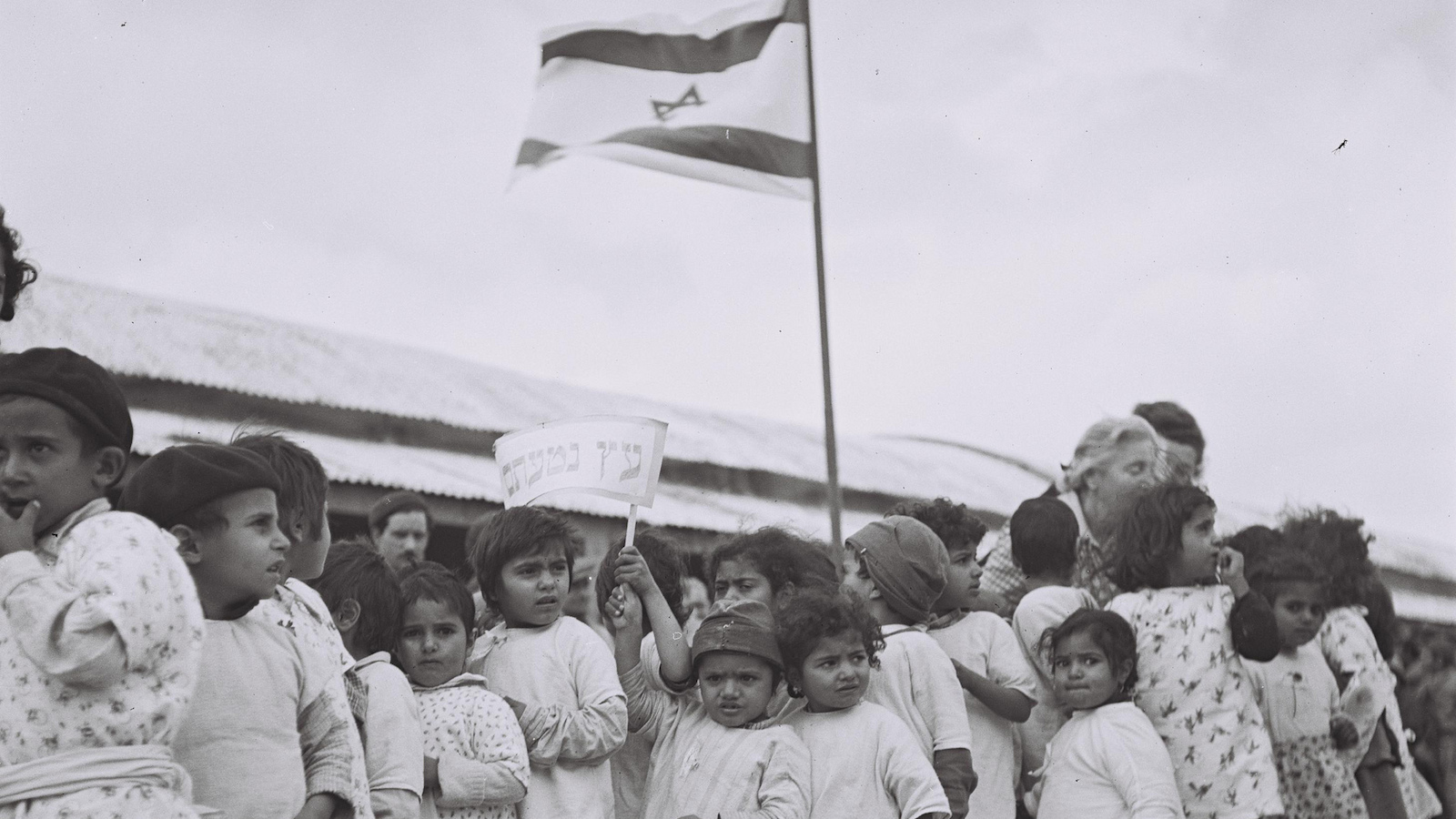The years between 1948 and 1951 witnessed the largest migration ever to reach the shores of modern Israel. This influx began at a time when the state was in the throes of its greatest struggle for survival, the War of Independence, and continued throughout a period troubled by both security concerns and economic hardship. In the mid‑1950s, a second wave arrived in Israel. The immigrants of the country’s first decade radically altered the demographic landscape of Israeli society as well as the balance between Israel and the Jewish diaspora. Many of today’s social issues are rooted in this mass migration: Israel’s rapid economic growth, social stratification, and the formation of new political frameworks and elites.
Dimensions
Some 688,000 immigrants came to Israel during the country’s first three and a half years at an average of close to 200,000 a year. As approximately 650,000 Jews lived in Israel at the time of the establishment of the state, this meant in effect a doubling of the Jewish population, even in light of the fact that some 10 percent of the new immigrants left the country during the next few years. Although immigration declined rapidly during the early 1950s, another 166,000 arrived in the middle of the decade.
Origins
The first immigrants to reach the new state were survivors of the Holocaust, some from displaced persons camps in Germany, Austria, and Italy, and others from British detention camps in Cyprus. The remnants of certain communities were transferred virtually in their entirety, for example Bulgarian and Yugoslavian Jewry. Large sections of other communities, such as those from Poland and Rumania, came to Israel during the first years. After the initial influx of European Jews, the percentage of Jews from Moslem countries in Asia and Africa increased considerably (1948 ‑ 14.4%, 1949 ‑ 47.3%, 1950 ‑ 49.6%, 1951 ‑ 71.0%). During 1950 and 1951, special operations were undertaken to bring over Jewish communities perceived to be in serious danger, for example, the Jews of Yemen and Aden (Operation Magic Carpet) and the Jewish community in Iraq (Operation Ezra and Nehemia). During the same period, the vast majority of Libyan Jewry came to the country. Considerable numbers of Jews immigrated from Turkey and Iran as well as from other North African countries (Morocco, Tunisia, and Algeria).
Immigration to Israel (1948‑1951) by Major Countries of Origin (#s in thousands)
• Poland 106.4
• Yemen and Aden 48.3
• Morocco, Tunisia, Algeria 45.4
• Bulgaria 37.3
• Turkey 34.5
• Libya 3 1.0
• Iran 21.9
• Czechoslovakia 18.8
• Hungary 14.3
• Germany, Austria 10.8
• Egypt 8.8
• USSR 8.2
• Yugoslavia 7.7
Source: Moshe Sicron, “The Mass Aliyah ‑ Its Dimensions, Characteristics and Influences on the Structure of the Israeli Population,” in Mordechai Naor, ed., Olim and Ma’abarot 1948‑1952 (Jerusalem: 1986): 34 (Hebrew). During the period between 1955 and 1957, most (62%) immigrants came from North African countries.
Characteristics
There were considerable differences between the immigrants from European countries and those from Asia and Africa. The survivor population was usually older and contained fewer children. On the other hand, the Jews from developing countries in Asia and Africa tended to have a large number of children but a smaller elderly population. The European immigrants were generally better educated. Neither group however, resembled the profile of pre‑state immigration: a significantly lower percentage of the post‑1948 immigrants were in the primary wage earning group (only 50.4% in the 15‑45 age group as compared to 66.8% in earlier immigration waves) and consequently fewer could participate in the work force of the new state. The newer immigrants had less education: 16% of those aged 15 and above had completed secondary education as compared to 34% among the earlier settlers. Women, especially among the immigrants from Asia and Africa, tended less to work outside the home. The professions of the new arrivals were also different than those of their predecessors: few had engaged in agriculture and most had been either small craftsmen (tailors, cobblers, carpenters, smiths) or traders and peddlers.
Effects on the Israeli Population
First and foremost, the mass migration led to a steep rise in the Israeli Jewish population. Not only was the population doubled within a short period of time, but the high fertility rate of many of the newcomers led to continued population increase in the years ahead. This growth was significant both with regard to the ratio between Jews and non‑Jews in Israel and to the demographic role of Israel in the Jewish world. Secondly, due to the large percentage of immigrants from Asia and Africa and to their higher fertility rate, the mass migration led to a change in the ethnic composition of Israeli society. An indication of this trend can be seen in the rise of the proportion of foreign‑born Israelis who were born in Asia and Africa. In November 1948 this proportion stood at 15.1%, but by the end of 1951 it had risen to 36.9%.
Thirdly, the new state now had to deal with a considerable population that to a large extent lacked agricultural or modern professional skills, or the same degree of modem education as the veteran population. Moreover, due to an under‑representation of that age group that could best adapt vocationally to new social and economic conditions, it was difficult to quickly integrate the new population. One of the most important social issues in Israel resulted from the difficulties involved in absorbing the new immigrants.
Reprinted with permission from The Jewish Agency.
Moshe
Pronounced: moe-SHEH, Origin: Hebrew, Moses, whom God chooses to lead the Jews out of Egypt.



